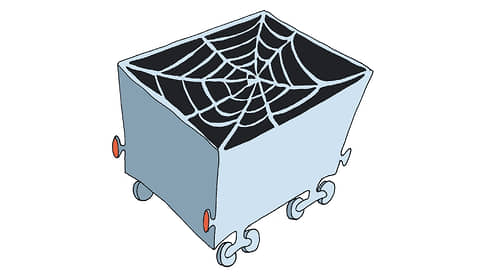The slowdown in railcar turnover in 2023 cost shippers 200 billion rubles
[ad_1]

A slowdown in the turnover of railway cars for one day results in more than 300 billion rubles. additional costs for shippers and operators for the purchase and rental of rolling stock were calculated in IPEM. Last year, turnover increased by 0.7 days, which gives 210 billion rubles. additional losses. JSC Russian Railways indicates that the increase in turnover did not occur in the company’s area of responsibility. At the same time, experts raise the question of whether the growth in railcar turnover is so bad if it means new orders at railcar manufacturing enterprises, income of leasing companies, banks, operators and even, possibly, the budget.
An increase in car turnover for one day means quite tangible losses for the market, as follows from the presentation by Vladimir Savchuk, deputy general director of IPEM. In this case, there will be a need for 51 thousand additional cars to transport the same volume of cargo. Investments in the purchase of these cars amount to 255 billion rubles, and another 52 billion rubles. the annual cost of their rental is estimated. For the parking and downtime of this park, 710 km of additional tracks are needed.
Car turnover in Russia in 2023 increased by 3.9%, or by 0.7 days, to 18.75 days. At the same time, the time directly in motion has not changed since 2022 (3.16 days): all the growth occurred in other components of turnover.
Thus, the time at intermediate stations increased by 1.7%. The time during cargo operations and at technical stations increased much more strongly (by 4.9% for both items), where in 2023 the cars spent 8.5 and 6.6 days, respectively.
“The slowdown in car turnover is associated with an increase in the average transportation distance, as well as with downtime not related to the responsibility of Russian Railways, including when cars are waiting for loading, directly under loading and awaiting unloading,” notes Russian Railways. , the rate of arrival of the new fleet is faster than the retirement of old cars.” Based on the existing freight base and infrastructure capabilities, the rolling stock turns out to be unclaimed and therefore remains idle, including on public tracks, and impedes the progress of trains and shunting operations, the monopoly adds.
According to surveys of shippers, part of the increase in turnover on non-public tracks is due to difficulties on the part of Russian Railways OJSC to promptly accept cargo for transportation, says Vladimir Savchuk.
According to him, shippers did not load more slowly – technology, on the contrary, is being improved, funds are being invested in loading and unloading mechanisms, car dumpers and other equipment are being installed to speed up the loading and unloading process. Each shipper has KPIs to reduce transportation costs, including on non-public routes. Some of the downtime on non-public tracks is due to the storage of extra cars not involved in transportation, notes Mr. Savchuk. There will be more such cars on the network in 2023. “Since freight turnover did not increase in 2023, the need to increase the fleet was minimized,” he says. “However, in 2023, the fleet belonging to the Russian Federation increased by 48.6 thousand cars, to 1.328 million cars (new cars were registered on network 73, 3 thousand units, 24.8 thousand units written off).”
Shippers pay for the increase in turnover, notes the head of Infoline-Analytics, Mikhail Burmistrov, but if we talk about the economy as a whole, then with a more or less stable cargo base, a larger turnover is economically feasible for it. Yes, freight moves slower, but there are also large-scale positive effects: carriage manufacturers produce rolling stock, leasing companies purchase and lease it, raising funds from banks, railway operators receive more income, and they all pay taxes. The key negative effect from the point of view of the situation on the Russian Railways network is due to the fact that in the absence of the ability to transport cargo, especially for export, companies are forced to reduce production and production, which is especially noticeable in the example of the coal industry. According to Mr. Burmistrov, before the start of the SVO, the turnover factor was more important: now the reliability and stability of traffic on key shipping-limiting directions is much more important. He is confident that now, given the unprecedented scale of infrastructure construction work, the shortage of personnel at Russian Railways, the need for accelerated localization of traction stock and the growing terrorist threat, it is impossible to accelerate the turnover on the network as a whole, although it can be improved in some key areas.
[ad_2]
Source link





